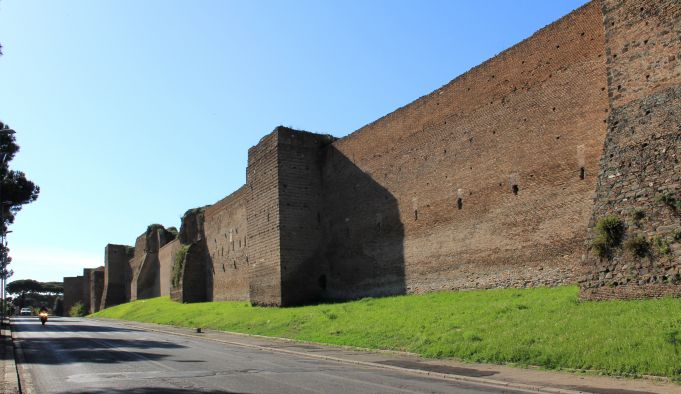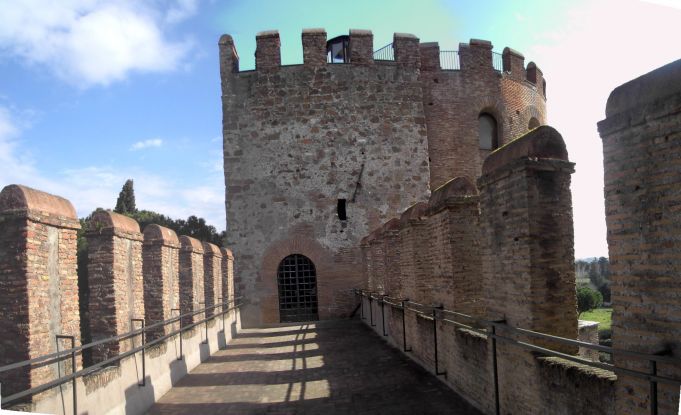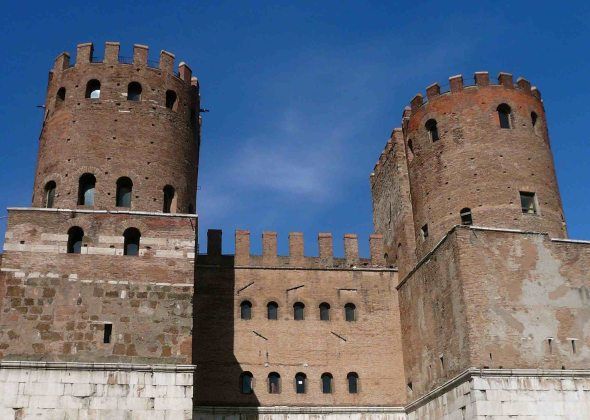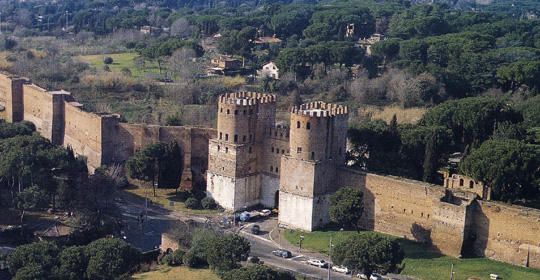Mainly a defence against barbarians and invaders, Rome's Aurelian Walls were also a pragmatic part of daily life.
For most visitors, Rome’s museums mean paintings and statues, more statues, more paintings.
In this regard the Museo delle Mura di S. Sebastiano is different. There’s hardly an artwork in sight. In further contrast to, say, the Vatican, here’s a museum where attendants can outnumber visitors, giving one an unusual sense of having the whole place to oneself. Still more remarkably the main exhibit is overwhelmingly the structure itself, all 18.8 km of it. Yes, the Aurelian Walls – even longer if you count the Leonine Wall, which was tacked on in the ninth century AD.
The museum’s opening display panel recounts how the first city boundary was not a wall at all. According to ancient Etruscan ritual, it was a cow-and-bull-ploughed furrow tracing a rectangle around the Palatine. Legend has it that Romulus laid out Rome’s sacred confines, only for the impetuous Remus to leap hotfoot over them, a sacrilegious error he paid for by becoming Rome’s first and – after Julius Caesar – most famous murder victim.

A later city limit is ascribed to Rome’s sixth king, Servius Tullius. Yet the walls only became serious in Republican times, following the Gauls’ infamous sack of the city in 389 BC. So serious that a short but mightily impressive volcanic-block chunk is still visible on the right as you exit Stazione Termini towards the bus station. The same anachronistically-named Servian wall once snugly contained all Rome’s seven hills and would later see off Hannibal.
Over time the city’s inhabited part expanded into the Esquilino – originally fit only for burials and outcasts – and beyond. Then in 270-271 AD the Alamanni crossed the Alps, reaching Verona. The emperor Aurelian, alarmed, built the wall that bears his name. The pomerium or sacred boundary line took a long leap outward, incorporating the hitherto outlying suburbs, Esquilino included.
As the wall proceeded it enveloped any large structures in its way, not destroying but incorporating them. First, this saved on ever more expensive building material. Second, it prevented such structures being taken over and used by an invading enemy. The Castrense amphitheatre near S. Croce in Gerusalemme is an example, the wall here taking a curious and elaborate bulge. Rebuilding took place under Maxentius, then Onorius and Belisarius; as the Barbarian threat grew, the wall doubled in height to meet it.
After the Barbarians had come and gone, next came the Saracens. To counter their invasion early mediaeval Pope Leo IV extended the wall to include St Peter’s, the new stretch taking the name Leonine. This and other sections underwent further fortification centuries later under Pope Pius IV, at least till the money gave out.
On a more day-to-day level the walls also served to combat tax evasion. All roads lead to Rome: supply those roads with gateways with a working portcullis, as originally was the case with Porta S. Sebastiano, and merchant, pilgrim or wayfarer can be subjected to a toll.

Indeed Porta S. Sebastiano is not only the best preserved of the walls’ gateways; it is almost the most strategic. Through it passes Via Appia Antica. Climb up onto the terrace and the two round towers on either side provided a 360-degree vantage point on the enemy and/or toll-dodgers. Today’s view is not only peaceful but arguably the most bucolic in all of Rome.
Beyond the traffic light immediately below there’s not a modern edifice in sight. To a soundtrack of crickets and the scent of pines you can watch the same Via Appia stretch toward, first, Capua, the original destination, then, via Benevento, to Brindisi and the empire beyond. Porta Sebastiano – or Porta Appia as it was then – was literally Rome’s gateway to the east.
It would be hard to find a spot so steeped in history. Hereabouts Peter was famed to have met Christ, asking him “Domine, quo vadis?”, only to be rebuked by Jesus himself with “Eo Romam iterum crucifigi” (I’m returning to Rome to be crucified once more). The nearby Quo Vadis church contains a stone which tradition claims bears a replica of Jesus’s footprint, the original being further down the road in the church of S. Sebastiano where a wooden effigy of the ex-Pretorian guard martyred under Diocletian is arrowed to the ceiling.

In 1536 Charles V, who had sacked the city only nine years previously, entered Rome again through this gate. Mixing realpolitik and masochism, Pope Paul III thought best to let bygones be bygones. Not only was the emperor admitted into the city; according to Vasari, the gate was decked, courtesy of Antonio Sangallo, with a joint pair of arms – of pope and emperor – this capped with a peculiarly absent-minded Romulus. The gate’s next big moment came in 1571, also represented in a fresco in Palazzo Colonna – Marcantonio Colonna rides through it on a white horse, a host of Ottoman captives from the Battle of Lepanto in tow.
A stretch of about 350m with ten towers attached to the museum is still walkable, one tower complete with Madonna and Child from when it was used as a mediaeval hermitage. For now access is only given to groups from schools, but hopefully that may change.
Extended walk or short climb, as you leave the museum, those ubiquitous stretches of brickwork around Rome take on a new interest and meaning. Goethe begins his Roman Elegies with, “Speak, o stones, say your piece.” Centuries later, this museum – and the 20-odd kilometres of brickwork attached – helps them do just that.
By Martin Bennett
Published in the January 2013 edition of Wanted in Rome magazine.
General Info
View on Map
Rome's Aurelian Walls
Museo delle Mura, Via di Porta San Sebastiano, Roma, RM, Italia


























